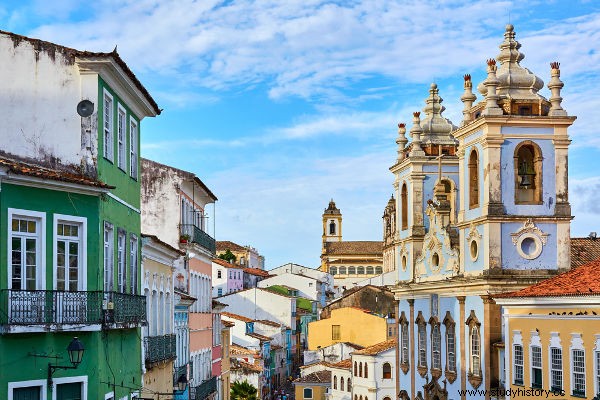
With the failure of the hereditary captaincy system , the Portuguese Crown chose to centralise power in the colony, that is, an authority was created over the entire colony called governor-general . The determination to create this position came from the King of Portugal himself, D. João III.
This measure was taken with the objective of transforming the colony into a more profitable business in view of the weakening of trade in India. Furthermore, the historian Boris Fausto suggests that the closing of the Portuguese trading post in Flanders and the military defeats suffered in Morocco help to understand the need to make Brazil a more advantageous territory for Portugal|1| .
The constant foreign threat, especially from the French, was also a factor that made the development of the colony extremely important for Portugal. Thus, to occupy the position of governor-general, the Portuguese Crown sent Tomé de Sousa to Brazil in 1549.
General Government of Tomé de Sousa
Tomé de Sousa was sent to Brazil in 1549 with specific instructions given by the Portuguese Crown. The objectives, in general, were to promote the population and economic development (mainly through the production of sugar) of the colony and to guarantee the expulsion of invaders.
Tomé de Sousa's expedition arrived in the region of Baía de Todos os Santos with approximately one thousand men. The instructions given to him were stipulated by the Crown in a regiment of 17 December 1548 . Among these orders to Tomé de Sousa were also keeping the natives under control and guaranteeing their conversion to Christianity.
The governor general's first action was to promote the construction of Salvador in 1549. This city was established as capital of Brazil , a status he held for over 200 years. Its geographic location was strategic due to its centralized position in the colony, which would facilitate contact with the different captaincies.
To assist the governor general in the administration of the colony, administrative positions were created with different attributions. The most prominent positions were:
-
Ombudsman :responsible for the affairs of justice and the imposition of laws in the colony;
-
Master Provider :responsible for the collection and administration of finances;
-
Major Captain :responsible for defending the colony against invaders and indigenous counterattacks.
Tomé de Sousa's policy towards the natives was, in that context, peaceful. He imposed slavery against rebellious indigenous tribes who did not accept the Portuguese presence. With the pacified tribes, the same relationship was established that had been used in the exploitation of pau-brasil:barter.
The biggest obstacle for the general government of Tomé de Sousa was the existing difficulty of communication with other captaincies of the colony. His government lasted until 1553, when he was replaced by Duarte da Costa.
Jesuits
Along with the expedition that brought Tomé de Sousa were Manuel de Nóbrega and five other companions belonging to the Society of Jesus, also known as Jesuits . The mission of the Jesuits here was, first of all, to establish peaceful relations with the natives to start a process of catechization, that is, the conversion of the Indians to Catholicism.
In addition, it was the responsibility of these religious to promote discipline in the existing clergy in the captaincy and, as they catechized the natives, the Jesuits sought to adapt them to a standard of living along European lines. . They also played an important role in defending the natives against enslavement. Throughout colonization, conflicts between Jesuits and settlers who wanted to enslave the indigenous people were common.
|1| FAUST, Boris. History of Brazil. São Paulo:EDUSP, 2013, p. 43.
by Daniel Neves
Graduate in History
